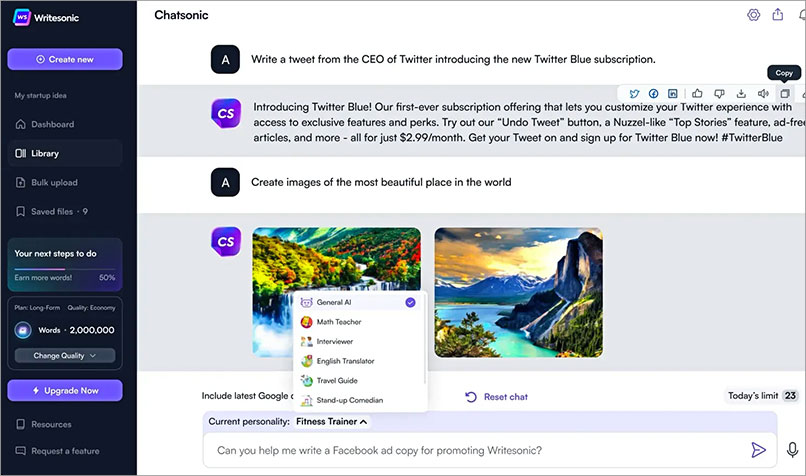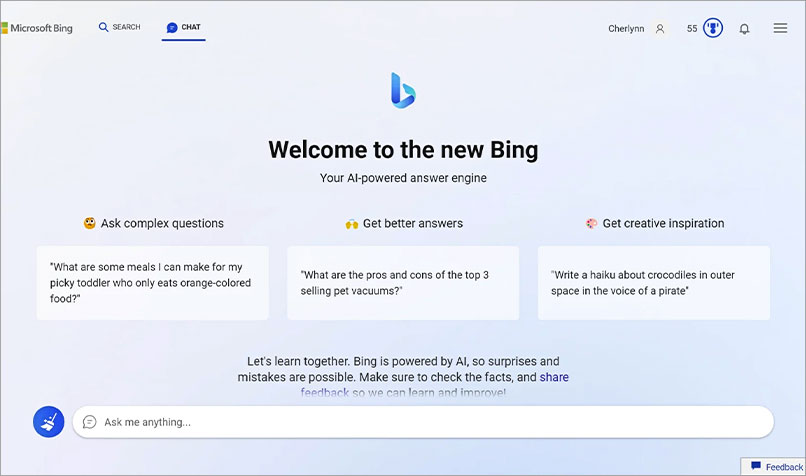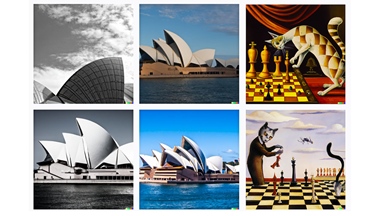Loading component...
At a glance
Generative artificial intelligence (AI) is a type of AI that can generate all types of content, such as text, music and images.
Generative pre-trained transformer (GPT) is a generative AI technology that underpins many AI tools. GPT has been trained on a vast collection of text data, including books and websites, so that it can analyse text input and generate a human-sounding response.
GPT powers chatbots, virtual assistants and language translators, among others.
Another generative AI technology is Google’s BERT (short for “Bidirectional Encoder Representations from Transformers”), which is designed to analyse and understand text in context.
Rather than processing text only from left to right or right to left, BERT analyses relationships between words in both directions for greater understanding. Google’s newest offering, Bard, also uses bidirectional processing.
1. ChatGPT
OpenAI’s ChatGPT is underpinned by GPT technology. ChatGPT uses a chat format that allows users to key a query, such as an instruction or a question, into a text field. ChatGPT generates a coherent, human-sounding text response within seconds.
2. ChatSonic

ChatSonic is another GPT-based chatbot. While ChatGPT warns that it has “limited knowledge of the world and events after 2021”, ChatSonic addresses that limitation by tapping into Google Search to draw on current information for its generated text.
3. DALL·E 2
From OpenAI, DALL·E 2 can create realistic images and artwork. Users type a description of the image they want to see – from a simple photo to a piece of artwork – and DALL·E 2 creates it in seconds.
4. YouChat
You.com, a new AI-based search engine, is also GPT based. YouChat is You.com’s AI search assistant that “you can talk to right in your search results”. Like ChatSonic, it draws on Google Search for its answers, but also adds sources for the generated text and additional search results.
5. Microsoft Bing

Microsoft, an investor in OpenAI, has implemented GPT into its search engine, Bing, so that it provides more relevant results and more complete answers. It can also chat with users to help them refine searches.
6. Microsoft Teams Premium
Microsoft has also released Microsoft Teams Premium, which provides AI-generated meeting notes, live translations, recommended tasks, personalised insights and more.
Limitations of generative AI
As tempting as it may be, using AI to perform work tasks, complete assignments or produce content for professional use is not advisable.
Authorship attribution is complex when it comes to AI-generated text and images, particularly artwork. For instance, DALL·E users are allowed to sell the images they generate, but OpenAI still owns them.
An image generated for one user can be reproduced identically for another user – who can also sell and publish the image. Questions have also been raised with regards to attributing authorship of the original works used by AI to generate new images.
The accuracy of generative AI also varies. For instance, Google’s recent announcement about its Bard AI was undermined when it made a mistake in a demonstration, while OpenAI warns that ChatGPT “may occasionally generate incorrect information” or “biased content”.
This can happen with any generative AI tool, particularly if the data it has been trained on also contains limited, incorrect or biased information. No AI tool is accurate 100 per cent of the time.

